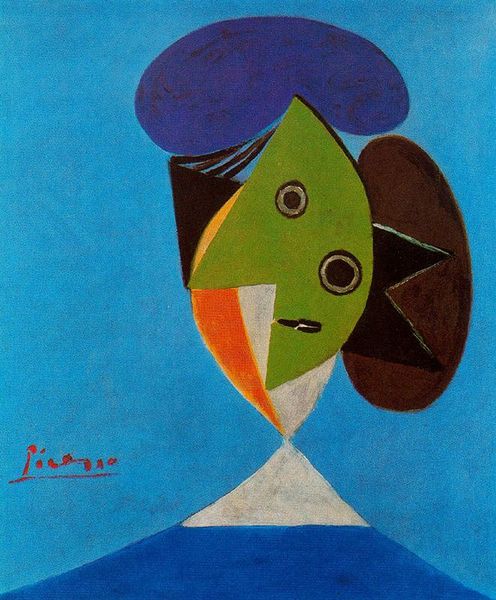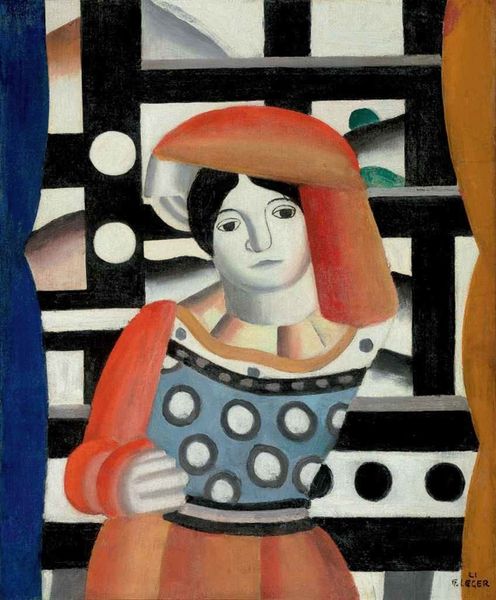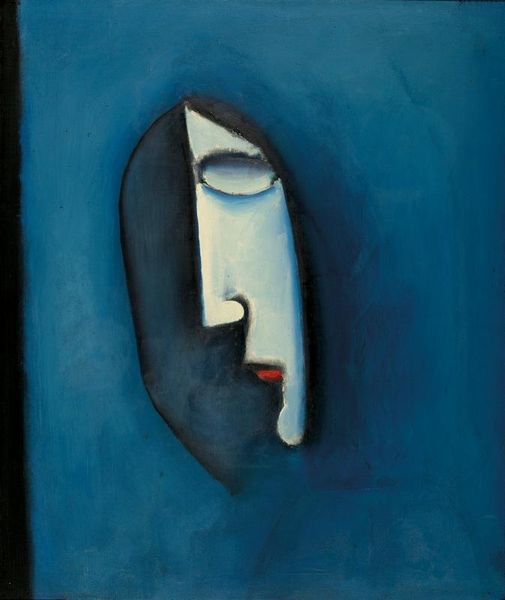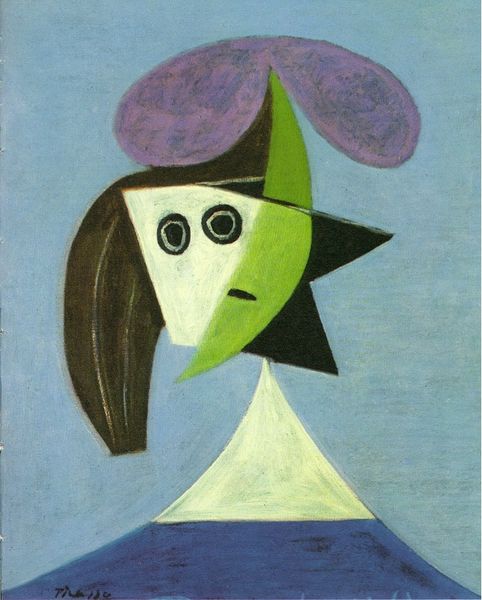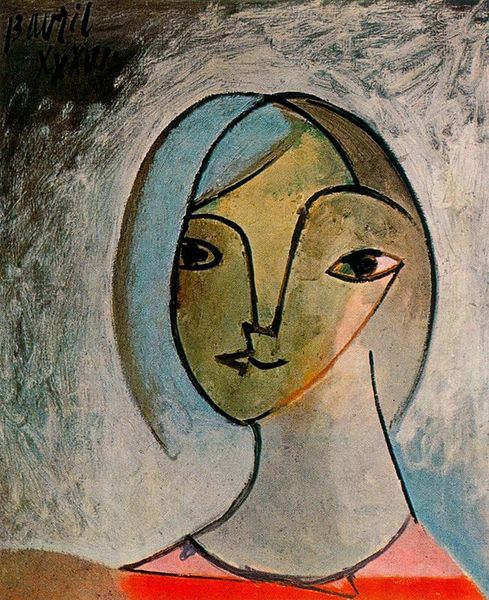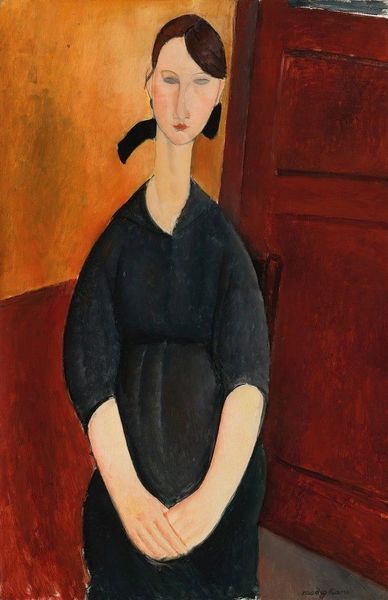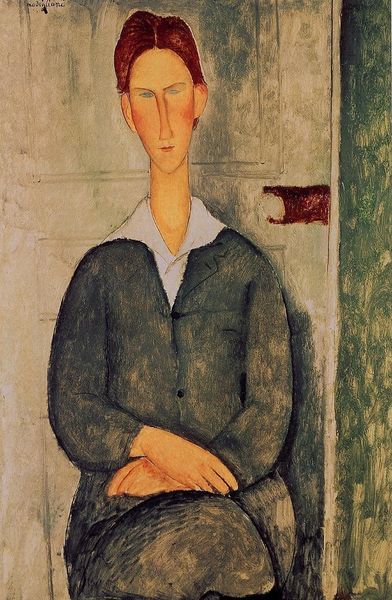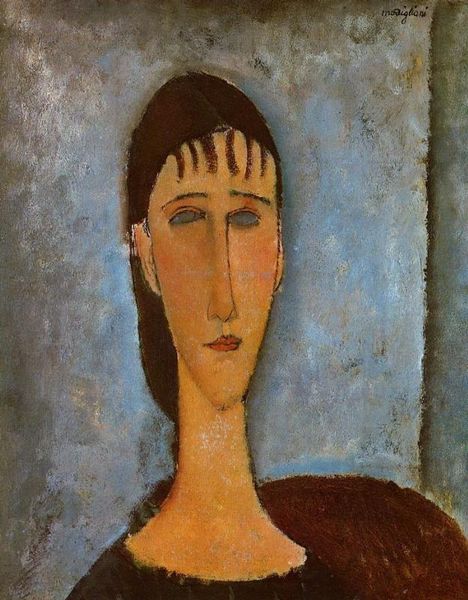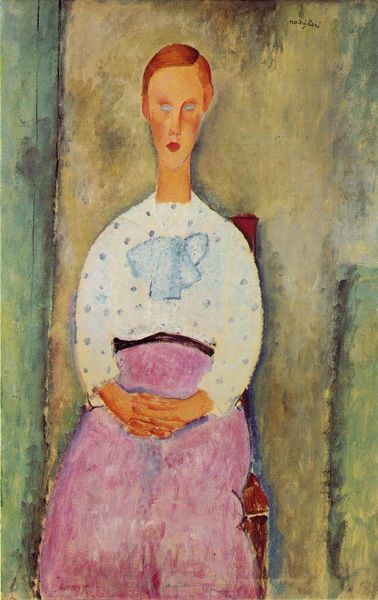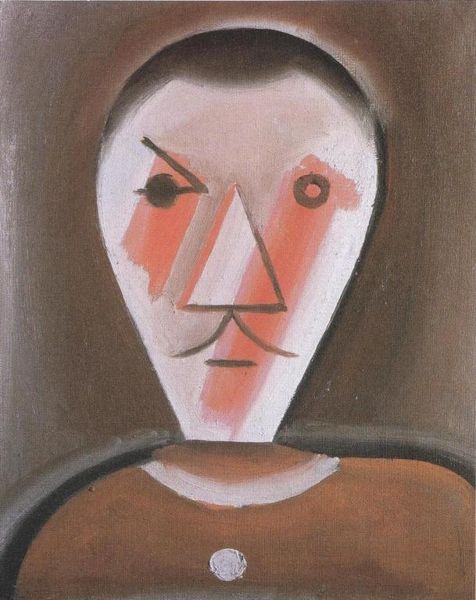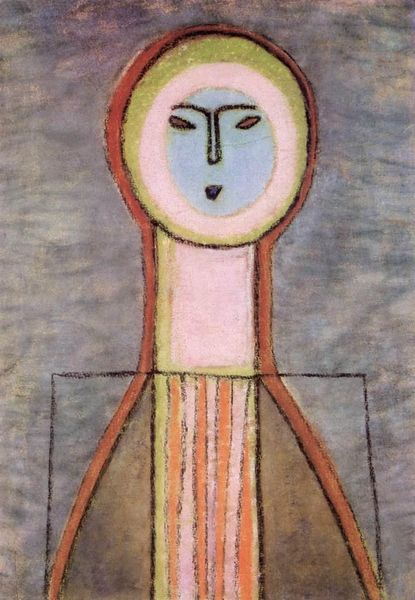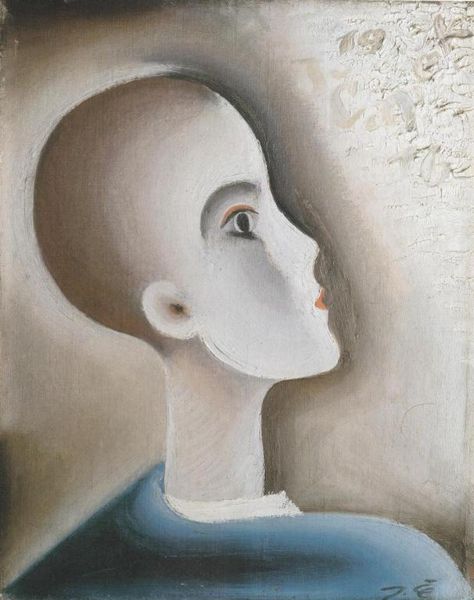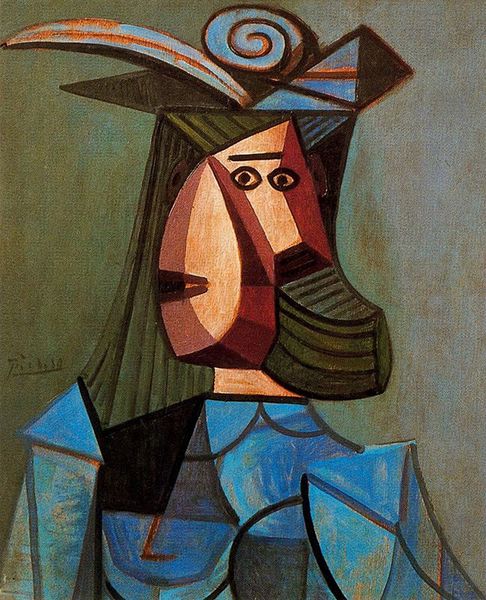
painting, acrylic-paint
#
portrait
#
cubism
#
painting
#
caricature
#
acrylic-paint
#
cityscape
Copyright: Public domain
Curator: I find the flattened planes and muted palette of Josef Capek’s "Girl in a Red Hat" intriguing; completed around 1915, it appears to be rendered in acrylic paint and offers a glimpse into the cultural landscape of the time. What are your immediate thoughts on encountering this artwork? Editor: Stark simplicity, wouldn't you agree? The large areas of color, particularly that unsettling green, feel… constricting. And the way she's presented—almost as a caricature—I'm getting a feeling of social commentary, but what, exactly? Curator: Well, the portrait is clearly rooted in the cubist aesthetic, and that in itself was a political act—challenging conventional modes of representation to dismantle bourgeois norms, perhaps mirroring broader social disruptions during the pre-war years. Considering its subject matter—do you find echoes of any historical archetypes or figures in the red hat, for instance? Editor: Red, of course, can signal passion, anger, even revolution. But in conjunction with that exaggerated hat...It feels like the hat almost becomes an armour for the face it conceals! It is such an odd combination. And the almost geometrical shapes making up the figure - the figure as social construction maybe? Curator: Precisely. Considering gender roles of the period, the sitter is presented, it reflects the limitations imposed on women while, at the same time, embodying a modernist aesthetic. It resists any one single interpretation, echoing contemporary feminist theories on intersectionality. Editor: I see the same echoes within older art history, though: hats carry social information and clues throughout so many movements and histories; I’m also struck by how those large, expressive eyes stare out; despite the geometrical constraints of the piece, those are recognizable as timeless features with consistent meaning through a variety of artistic ages! Curator: Yes, these works resonate on multiple levels; examining this painting is helpful for understanding not only this individual piece of art but also for gaining insights into art, the era in which it was created, and the context surrounding art pieces as a whole. Editor: The interplay between the cubist elements and more traditionally understood symbols offers an intriguing invitation into a complex web of emotions and meanings across diverse schools and movements in art history.
Comments
No comments
Be the first to comment and join the conversation on the ultimate creative platform.
